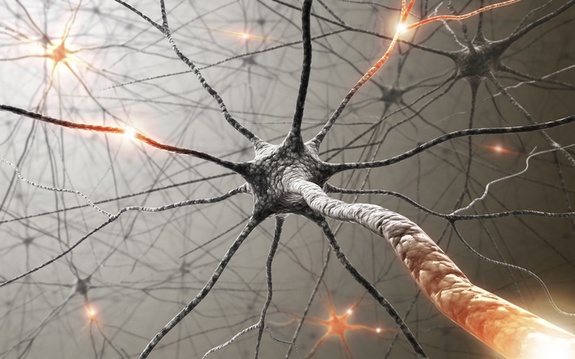How to Use Light to Control the Brain

In the film Amèlie, the main character is a young eccentric woman who attempts to change the lives of those around her for the better. One day Amèlie finds an old rusty tin box of childhood mementos in her apartment, hidden by a boy decades earlier. After tracking down Bretodeau, the owner, she lures him to a phone booth where he discovers the box. Upon opening the box and seeing a few marbles, a sudden flash of vivid images come flooding into his mind. Next thing you know, Bretodeau is transported to a time when he was in the schoolyard scrambling to stuff his pockets with hundreds of marbles while a teacher is yelling at him to hurry up.
We have all experienced this: a seemingly insignificant trigger, a scent, a song, or an old photograph transports us to another time and place. Now a group of neuroscientists have investigated the fascinating question: Can a few neurons trigger a full memory? In a new study, published in Nature, a group of researchers from MIT showed for the first time that it is possible to activate a memory on demand, by stimulating only a few neurons with light, using a technique known as optogenetics. Optogenetics is a powerful technology that enables researchers to control genetically modified neurons with a brief pulse of light.
To artificially turn on a memory, researchers first set out to identify the neurons that are activated when a mouse is making a new memory. To accomplish this, they focused on a part of the brain called the hippocampus, known for its role in learning and memory, especially for discriminating places. Then they inserted a gene that codes for a light-sensitive protein into hippocampal neurons, enabling them to use light to control the neurons.
With the light-sensitive proteins in place, the researchers gave the mouse a new memory. They put the animal in an environment where it received a mild foot shock, eliciting the normal fear behavior in mice: freezing in place. The mouse learned to associate a particular environment with the shock.
Next, the researchers attempted to answer the big question: Could they artificially activate the fear memory? They directed light on the hippocampus, activating a portion of the neurons involved in the memory, and the animals showed a clear freezing response. Stimulating the neurons appears to have triggered the entire memory.
The researchers performed several key tests to confirm that it was really the original memory recalled. They tested mice with the same light-sensitive protein but without the shock; they tested mice without the light-sensitive protein; and they tested mice in a different environment not associated with fear. None of these tests yielded the freezing response, reinforcing the conclusion that the pulse of light indeed activated the old fear memory.
In 2010, optogenetics was named the scientific Method of the Year by the journal Nature Methods. The technology was introduced in 2004 by a research group at Stanford University led by Karl Deisseroth, a collaborator on this research. The critical advantage that optogenetics provides over traditional neuroscience techniques, like electrical stimulation or chemical agents, is speed and precision. Electrical stimulation and chemicals can only be used to alter neural activity in nonspecific ways and without precise timing. Light stimulation enables control over a small subset of neurons on a millisecond time scale.
Get the world’s most fascinating discoveries delivered straight to your inbox.
Over the last several years, optogenetics has provided powerful insights into the neural underpinnings of brain disorders like depression, Parkinson’s disease, anxiety, and schizophrenia. Now, in the context of memory research, this study shows that it is possible to artificially stimulate a few neurons to activate an old memory, controlling an animals’ behavior without any sensory input. This is significant because it provides a new approach to understand how complex memories are formed in the first place.
Lest ye worry about implanted memories and mind control, this technology is still a long way from reaching any human brains. Nevertheless, the first small steps towards the clinical application of optogenetics have already begun. A group at Brown University, for example, is working on a wireless optical electrode that can deliver light to neurons in the human brain. Who knows, someday, instead of new technology enabling us to erase memories á la Eternal Sunshine of the Spotless Mind, we may actually undergo memory enhancement therapy with a brief session under the lights.
This article was first published on Scientific American. © 2012 ScientificAmerican.com. All rights reserved. Follow Scientific American on Twitter @SciAm and @SciamBlogs. Visit ScientificAmerican.com for the latest in science, health and technology news.



